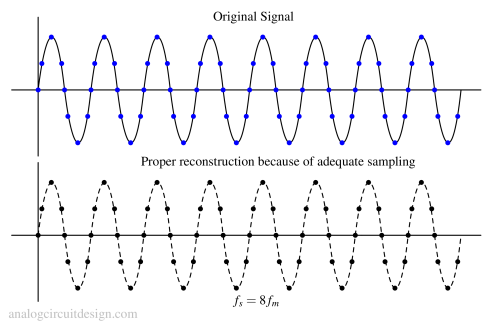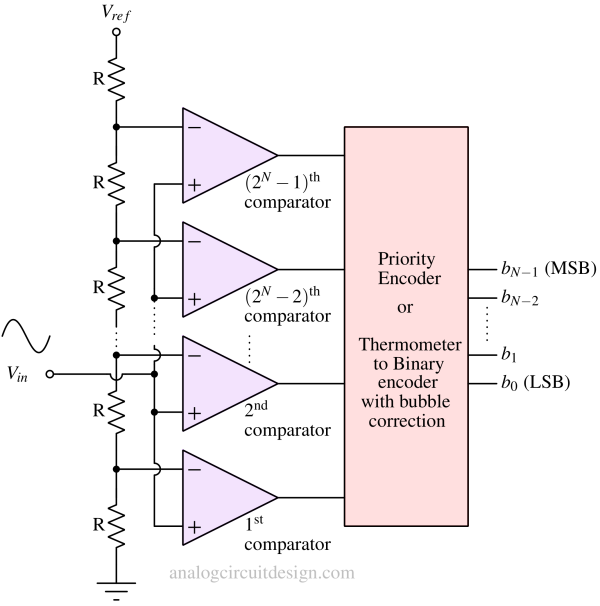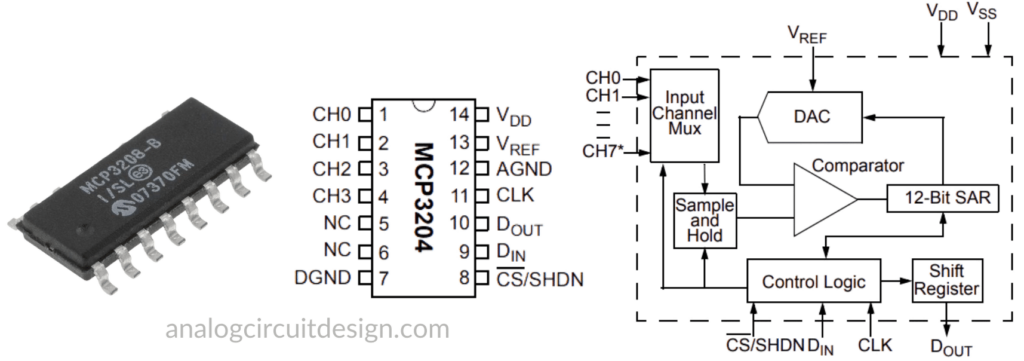Data-Converters¶

An R-2R ladder DAC converts digital binary inputs into a corresponding analog voltage using a network of resistors arranged in a repeating R and 2R pattern.

The Nyquist-Shannon sampling theorem states that a continuous-time signal can be accurately reconstructed from its samples if it is sampled at a rate at least twice its highest frequency.

A Flash ADC is a high-speed analog-to-digital converter that uses a parallel array of comparators to convert an analog signal into a digital output in a single step.

A digital-to-analog converter (DAC) transforms digital binary signals into corresponding continuous analog voltages or currents.

Pulse Width Modulation (PWM) is a technique that varies the width of pulses in a signal to control the average power delivered to a load.

A pipeline ADC is a high-speed analog-to-digital converter that processes an input signal through multiple stages in a sequential manner to produce a digital output.

A successive approximation ADC converts an analog signal to a digital output by approximating the input voltage step by step using a binary search algorithm.

An Analog to Digital Converter (ADC) is an electronic circuit that converts continuous analog signals into discrete digital values for processing, storage, or transmission.
